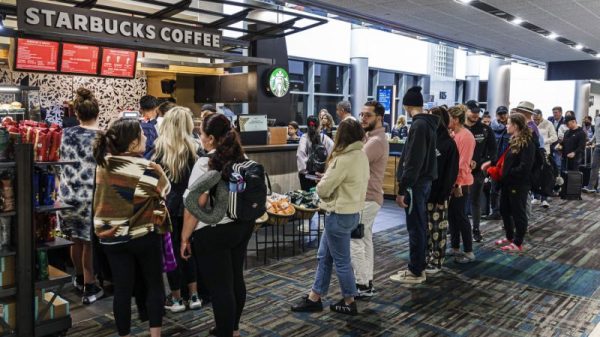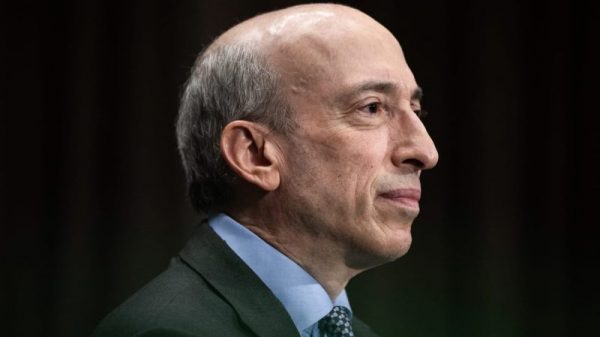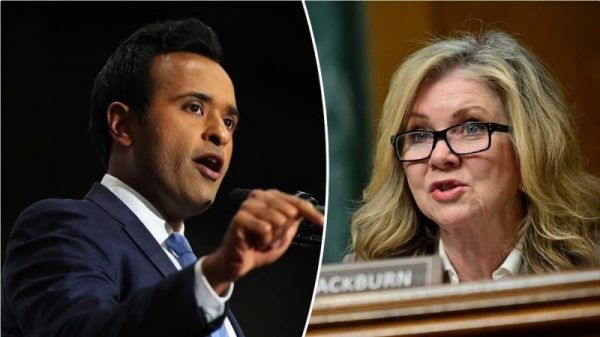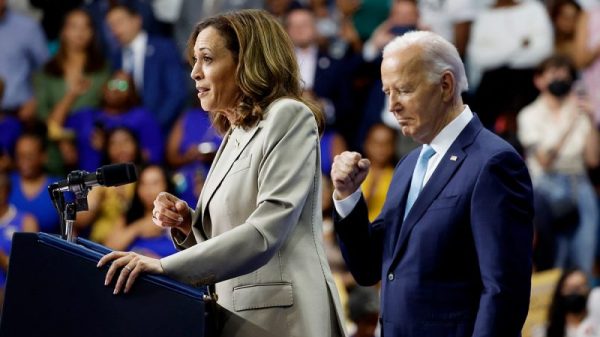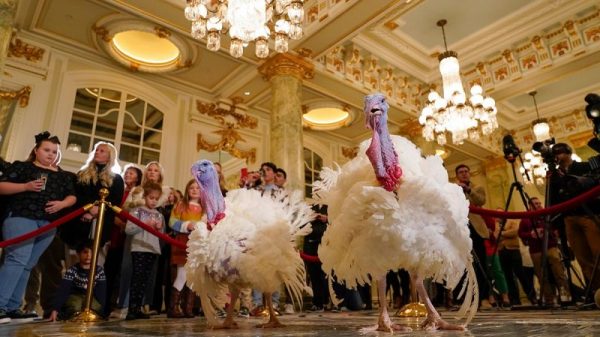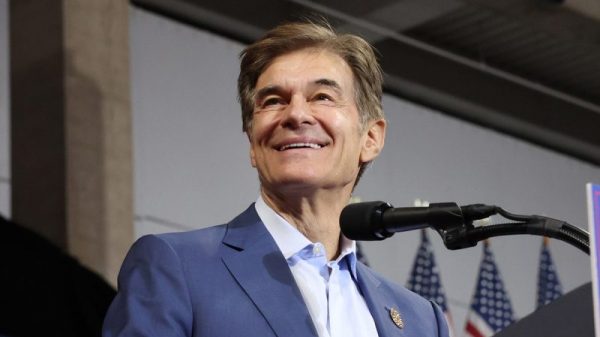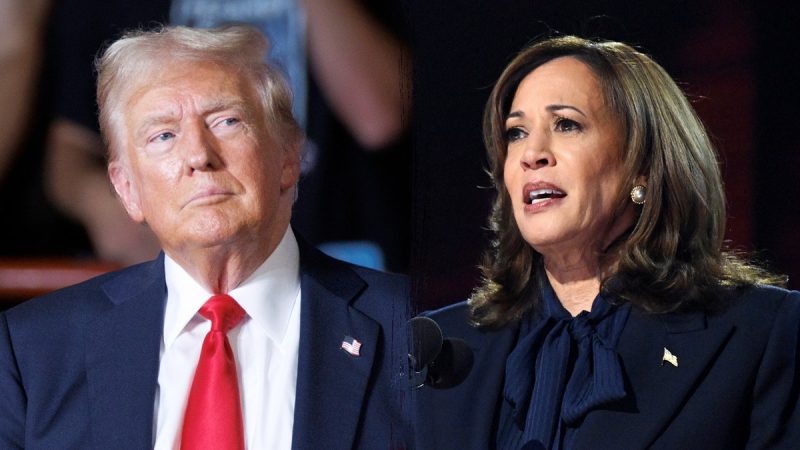As we start the final month of the presidential campaign, the race appears to remain very close – much like every election of this century (except for Barack Obama’s first race in 2008). The latest Fox News national poll shows a two-point race in the national popular vote, with Vice President Kamala Harris slightly ahead of former President Trump 50-48 – and each of the seven key battleground states similarly showing the candidates within the margin of error from each other.
If you want to drop into the weeds (and I guess that’s why they pay me), I think there remain five key numbers that will indicate which candidate has the momentum in the race – and tell you which campaign is closer to achieving its goal.
I’d argue the key ‘weeds that count’ are: Trump’s ‘number,’ Trump’s support among Hispanic and African American voters, Harris’s support among Republicans who don’t describe themselves as ‘MAGA,’ and Harris-Walz support among voters in rural America.
Trump’s number is the number I’ve looked at all year: His share of the popular vote. All year it has hovered around 48% – in all the most-respected public polls. Trump’s political persona is about as solidified as any American politician in my professional lifetime. There is little that he, his detractors, or his supporters can say or do that will shake voters’ impression of him – either positively or negatively. His vote share has basically remained what it is through almost a decade of his public life.
So, all year I’ve focused on Trump’s share of the vote. It isn’t going to change dramatically, but small swings may indicate strength or emerging weaknesses. The arc of Harris’s campaign – she quickly consolidated support among the bulk of voters who’d told pollsters from 2023 until July that they were ‘undecided.’ They weren’t really undecided. They were voters who didn’t like Trump but were lukewarm about President Joe Biden. And now the bulk of them are in the Harris column.
But what about the rest? Now when I look at the undecided number (and it’s remarkably small), I think there might be some hidden Trump vote there. For example, Trump is at ~47% in the better polls in Florida, and hovering around 50% in Texas in similarly respected polls. That’s below the 52% he got in Texas in both 2016 and 2020, and the 51% he got in Florida in 2020.
He will almost certainly win both states, which suggests that some folks telling pollsters they’re ‘undecided’ will, in the end, choose Trump. On the other hand, it could be a sign of some weakness among Trump voters.
The voter groups where Trump is showing surprising strength is his support among minorities, especially Hispanic and African American voters. Prior to dropping out of the race, Biden was doing remarkably poorly among those groups; Trump had gotten less than 10% of the African American vote in 2020, and 35% of Hispanic support.
In the latest Fox News national poll (September), Trump is getting over 40% of the Hispanic vote and almost 30% of the Black vote. And it explains the closeness of the contests in the battleground states. Looking at those numbers is key. If Trump can continue to run strong among Hispanic voters, he’ll likely win Arizona and Nevada. If Harris can recapture some of the 2020 Biden strength among African Americans, she’ll be able to win Pennsylvania, North Carolina and Georgia.
Conversely, the Harris numbers to look at are her support among rural voters (the locus of Trump’s base) and at her support among Republicans who say they aren’t part of the MAGA (Make America Great Again) movement.
One of the reasons Harris picked Minnesota Governor, and occasionally folks, Tim Walz, was to try to make inroads among rural voters. They didn’t want to win the rural vote – they just wanted to lose by less. It was the rural vote that likely earned Trump victories in Wisconsin and Pennsylvania in 2016 and propelled him into the White House.
Can he do it? So far, the jury is out. His suboptimal performance in the Vance-Walz debate likely did little to win over rural voters – but they’re still at it. He doesn’t appear to mind going into rural settings – where he is often greeted by Trump supporters booing him – so it is a number that is key to study.
Finally, there remains the non-MAGA GOP voters. Somewhere between a quarter to a third of GOP voters describe themselves as ‘non-MAGA.’ This was the group who supported former Ambassador Nikki Haley in the primaries. At that time, according to the Fox News Voter Analysis of Iowa caucus goers and New Hampshire and South Carolina primary voters, almost half of them said they would not vote for Trump in November.
There are only limited signs of Trump weakness among that group now that we’re in a general election campaign. Still, in the most recent Fox News Arizona state poll, roughly one-in-five non-MAGA GOP voters said they were supporting Harris. That translates to roughly 6% of GOP voters ‘defecting’ to Harris. That’s enough to keep the state close, but probably not enough to win. Still, it represents a clear danger signal for Trump.
Of particular concern are other signs of non-MAGA defection. For example, the same poll tested the Senate race between Republican Kari Lake and Democrat Reuben Gallego. In that race (where Gallego has a clear lead), Fully 16% of Republicans said they’d vote for Gallego. 6% of GOP Arizona voters would vote for Harris and another 10% said that while they’d vote for Trump, they’d defect from the GOP in the Senate race.
Either way, it shows the instability of GOP support – and a wavering among some parts of the GOP.
If Trump is able to shore up that non-MAGA weakness, he’ll be well positioned in November – if Harris is able to pull some of them to her side, she’ll be well-positioned. So, looking at her numbers among non-MAGA GOP voters is key.
Suprisingly enough, in that Vance-Walz debate, Vance did a good job of trying to appeal to that non-MAGA group. I say surprisingly, since when Trump picked Vance, some analysts complained that Trump had doubled down on the MAGA wing of the party – and left the non-MAGA (the Haley voter) by the wayside.
But Vance’s smooth explication of his (and Trump’s) positions on school violence, the war in the Middle East, and immigration – probably went a long way to trying to ameliorate Trump’s non-MAGA weakness.
Yes, it’s in the weeds, and, yes, the subgroups are small relative to the overall nation. In looking at these numbers, note that they are subject to a significant margin of error. They may show evidence of a shift or just statistical noise. But they are the key numbers to watch in the coming weeks: Trump’s overall number, Trump’s support among minorities, the Harris vote in rural America, and the Harris vote among non-MAGA GOP voters.







